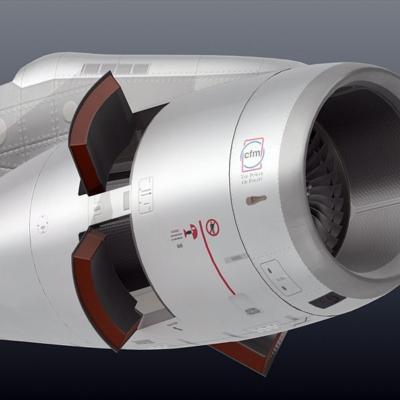Part Supplier Trafficked Extensively in Counterfeit Aircraft Parts
United and Southwest Airlines were compelled to corrective action after confirming a number of engine parts supplied to the two air-carriers by U.K. vendor AOG Technics were, in fact, counterfeit.

AOG Technics is suspected of selling dubious engine parts to aircraft service centers and Maintenance, Repair, and Overhaul (MRO) facilities around the world. The company is presently under the scrutiny of international investigators about the business of determining the source or sources of thousands of aero-engine components sold with forged paperwork.
CFM International—the Cincinnati, Ohio-based producer of aircraft turbine engines and joint-venture of GE Aerospace and Safran Aircraft Engines—has, to date, discovered no fewer than 72 discrete instances in which AOG Technics sold aircraft engine parts with falsified documentation.
Southwest Airlines precautionarily removed parts acquired through AOG Technics from its aircraft. Shortly thereafter, United Airlines announced it had become aware two of its aircraft had been fitted with AOG Technics-supplied engine components and grounded the planes tout suite.
Southwest, United, Virgin Australia, and others air-carriers in receipt of dubious engine components purchased such from AOG Technics—which functions after the fashion of a retailer, acquiring and distributing parts produced by a large number of OEMs.
Shabby optics notwithstanding, the lack of legitimate paperwork doesn’t discount entirely the possibility that the parts sold by AOG Technics are authentic. Illicit trade in aircraft components often includes genuine parts too old, too worn, or non-conformal to manufacturers’ tolerances or industry standards.

Currently, CFM and AOG Technics are embroiled in litigation moving with characteristic languor through the U.K.’s court system. CFM’s attorneys have accused AOG Technics of engaging in a “deliberate, dishonest, and sophisticated scheme to deceive the market with falsified documents on an industrial scale.”
CFM asserted, also, that AOG’s alleged subversions have forced the removal-from-service of between 48 and 96 commercial aircraft operated by global air-carriers. The engine-maker further accused AOG Technics of indolence vis-à-vis the release of documentation germane to the tracing of dubious parts.
AOG Technics was founded in 2015 by entrepreneur Jose Alejandro Zamora Yrala. The company operated, initially, as an intermediary between engine shops. By 2018, however, the AOG had reportedly devised a scheme by which it acquired and restored—superficially, anyway—used aircraft components, then generated fraudulent documentation, including signatures, indicating subject parts were OEM new.
AOG’s machinations are neither novel nor new. Following upwards of 120 convictions involving counterfeit aircraft parts handed out by courts between 1990 and 1996, the FAA implemented a program of voluntary audits of aerospace component and system suppliers. The program benefits accredited sellers without expending limited agency resources. Regrettably, the lack of oversight occasions opportunity nefarious players may readily exploit—particularly as the airline industry and FAA contend contemporaneously with staffing shortages.

Former U.S. Department of Transportation Inspector General Mary Schiavo conceded: "We were busting people and sending them to prison twenty-years ago for this. … It's the same old scheme."
Since the hybrid-concern’s September 1974 founding, CFM has produced upwards of 33,000 turbine aircraft engines—of which some 23,000 remain in service. The CFM56, which powers ubiquitous aircraft families such as Boeing’s 737 Classic and NG series as well as many Airbus A320 models, is among the world’s most-produced and popular jet engines. CFM’s more contemporary LEAP-1 engine was selected by Boeing and Airbus to power the marques’ respective 737 MAX and A320neo narrow-body airliner families. Interestingly, AOG Technics appears to have sold not a single LEAP engine component.
 ANN's Daily Aero-Term (04.28.24): Airport Marking Aids
ANN's Daily Aero-Term (04.28.24): Airport Marking Aids Aero-News: Quote of the Day (04.28.24)
Aero-News: Quote of the Day (04.28.24) ANN's Daily Aero-Linx (04.28.24)
ANN's Daily Aero-Linx (04.28.24) Aero-News: Quote of the Day (04.29.24)
Aero-News: Quote of the Day (04.29.24) ANN's Daily Aero-Linx (04.29.24)
ANN's Daily Aero-Linx (04.29.24)





